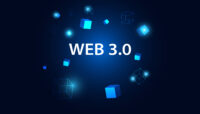Set yourself up for a wild ride with Digital Twins. These revolutionary concepts are changing the game in several industries, like healthcare and manufacturing. But what exactly are they?
Imagine a virtual version of anything real. That’s where we start to get into Digital Twins. These digital versions are models that act just like the real thing.. With things such as artificial intelligence, data analytics, and Internet of Things (loT) these virtual brainchilds do an amazing job at mimicking their real-life counterpart.
Understanding digital twins
Just something that looks like the real thing? Oh no, it’s much more than that. These models sync with whatever they’re supposed to replicate in real-time. Doing this allows businesses to make better choices when it comes to assets and processes.
Creating virtual replications of physical objects is nothing new either. It started back in aerospace engineering when developers made planes virtually so they could predict any issues they’d face before it happened IRL. Now you can find them in manufacturing, healthcare, energy, etc.
Companies use these fake creations to simulate different situations and see how they would handle it without messing up the actual process. They also analyze the embedded sensors for insights on future problems.
It creates unity between two worlds: physical and digital which leads way for some great decisions based on data.
Various applications of digital twins
With technology being so versatile now-a-days, this concept is used everywhere. Here are some examples:
Manufacturing
Factories around the world have been using Digital Twins as production tools rather than just making sure everything works properly.
By making virtual copies of production lines or equipment manufacturers can improve overall productivity while reducing downtime.
Operations don’t have to be stopped if there is a problem if engineers can virtually fix them first without interrupting workflow.
Also valuable information on shipping them out gets gathered too by monitoring performance through its life cycle. This includes maintenance needs and even potential risks!
Healthcare
The future of healthcare is now. With digital twins, doctors can get a better understanding of people’s health and create personalized treatment plans to attack it.
Letting these models gather data through wearable devices, electronic health records and even genetics creates a huge advantage in diagnosis. Doctors will be more accurate when figuring out what’s wrong with patients which also allows them to predict the outcome of treatments and monitor its effectiveness all through one piece of technology.
Digital Twins can also be used to model the effects of various medications and treatment options, allowing medical professionals to make informed decisions and optimize patient care. By continuously updating the Digital Twin with real-time data, healthcare providers can monitor patients’ progress from afar and step in when needed.
Energy
For assets owned by companies that provide energy services, like power plants and wind farms, Digital Twins are changing the way they’re managed and optimized. These companies can create virtual replicas of their infrastructure to monitor performance for potential issues that may arise on a microscopic level. This allows them to then optimize their operations.
The technology is useful for simulating different scenarios too. For example, these companies could predict what would happen if they changed their service offerings or started to use renewable energy sources as a primary source. And by analyzing sensor data from all their facilities, they could predict maintenance needs and reduce downtime.
In addition, digital twins could help operators optimize each building’s consumption of electrical power. By creating virtual models of individual structures (like an office building), operators could simulate different energy management strategies for buildings in all types of environments — city skyscrapers or suburban office parks — so they know where opportunities lie for saving energy and reducing environmental impact.
Benefits of using digital twins in business operations
There are several advantages businesses get from adopting Digital Twins across industries.
Better decision-making: Businesses that have access to real-time data about how assets are performing will make smarter decisions when it comes to managing them. Data-driven insights allow organizations to analyze patterns, identify anomalies and predict outcomes ahead of time so managers can take proactive measures rather than being reactive.
Increase operational efficiency: Virtual replicas of assets signal where inefficiencies lie within systems. This lets businesses identify solutions without bringing down actual processes during testing phases. When this happens virtually instead of physically it limits downtime, increases productivity and saves on costs overall.
Predictive maintenance: Because a Digital Twin is updated with real-time data, it can predict maintenance needs and prevent equipment failures. This is done by monitoring performance and analyzing the sensor data collected during operations to detect anomalies before they become larger issues.
Risk reduction: Managers can test different scenarios in their virtual model and analyze how each option impacts their operation with the help of a Digital Twin. This allows them to recognize risks ahead of time so they can allocate resources appropriately, improve safety measures or make other decisions that limit overall harm to the organization.
Innovation and product development: The technology behind Digital Twins opens up opportunities for creativity across industries, not just in manufacturing. By testing out new features on a virtual model instead of on an actual prototype, businesses can iterate faster and bring products to market more quickly.
The physical asset is the thing that a digital twin represents. It can be anything in the world, from a product to an entire city. It doesn’t matter what it is, as long as it exists in the real world, the digital twin will represent it. The physical asset usually has all sorts of techy things attached to it, like sensors and actuators.
Data acquisition and integration
In order for your digital twin to work properly, you need to collect data from a lot of different places. This includes stuff like sensors on the physical asset and external systems. Once you have all that data, you need to integrate it into your Digital Twin system so that everything works together right.
Data analytics and modeling
You do not want to skip out on this part of making a Digital Twin system. By looking at all the data you collected from sensors and other sources you can understand how well your asset performs and what condition its in. When you apply machine learning algorithms or artificial intelligence programs to this data, you can make some cool and useful predictions about your assets future.
Visualization and user interface
In order for users to interact with their new digital twins they’ll need some sort of interface where they can see what’s going on. A 3D model would be ideal so they can look at their assets from any angle whenever they please without having to be near them physically.
Communication and connectivity
When building out a Digital Twin strategy one of the most important things will be making sure everything communicates smoothly between systems (real or digital). You’ll want technologies like IoT protocols, cloud computing, and edge computing around so that everyone has access to the same real-time information.
Implementing a digital twin strategy
You don’t want a basic boring one-dimensional digital twin; believe me when I say there are way cooler ones out there! Here are some steps you should follow if you’re considering adopting one:
Start by defining objectives: Figure out why exactly you want a digital twin. What problems are you trying to solve and what are you’re goals?
Assess data availability and quality: Make sure that you have the necessary resources to create and maintain your new virtual replica.
Choose the right technology stack: This will depend on your needs, but make sure that whatever technology you choose is scalable and able to integrate with existing systems.
Develop a data strategy: You need to know how the data is going to flow through your Digital Twin system before you start using it. Data privacy, governance, lifecycle management, ownership, access rights — all these things play a role in making sure everything stays safe and protected.
Pilot your idea: Test it out to make sure that it works! It’d be a total failure if you spent all this time implementing something that doesn’t even work when it’s actually put into use.
Educate users
Offer users training and educational resources so they can understand the benefits and capabilities of the Digital Twin system. Help users explore the technology’s potential to drive innovation and improve operations by encouraging them to make data-driven decisions.
Challenges and considerations when adopting digital twins
While Digital Twins offer significant benefits, their implementation comes with challenges. Here are a few of these challenges that you need to keep in mind as you adopt Digital Twins for your business operations.
Data privacy and security
The collection and analysis of large amounts of data on which digital twins rely raise concerns about data privacy and security. To protect sensitive information, ensure that adequate measures to comply with regulations are in place. Make sure unauthorized access is prevented through robust cybersecurity.
Data quality and reliability
The effectiveness of a digital twin largely depends on the accuracy and reliability of the data used to create and maintain it. Ensure that you only use data from reliable sources after conducting quality checks and validating it. Implement processes governing how you handle data to maintain its integrity consistently.
Integration with existing systems
Integrating a Digital Twin system into your existing infrastructure may be quite complex. Take compatibility, interoperability, scalability into account when selecting the tech stack. Additionally, make sure that your selected system is able to interact seamlessly with other systems while also utilizing existing data sources.
Change management and organizational culture
To implement a Digital Twin system, workflows, processes, and organizational culture must change. Prepare for resistance by developing a change management plan that will foster adoption once implemented. Provide ongoing support during training sessions for users so they can better understand how they will benefit from using this new system.
Costs and resource allocation
Following an initial investment there could be ongoing maintenance costs associated with implementing a Digital Twin system . Conducting a cost-benefit analysis will give insight on whether or not implementing this technology will benefit your company in the long run.
Real-life examples of successful digital twin implementations
Digital Twins have been implemented in numerous industries with astounding results. Some examples of organizations that have used Digital Twins to achieve operational excellence and innovation include:
General Electric (GE)
General Electric has made virtual replicas of power generation assets to create a better approach to maintenance. By doing this, they’re able monitor performance, detect anomalies and predict failures. This proactive strategy towards maintenance has resulted in reduced downtime, improved efficiency and cost savings.
Siemens
In Siemens’s manufacturing plants, they’ve created virtual replicas of production lines to improve product quality and optimize production processes. They can now simulate different scenarios to identify bottlenecks and test new strategies. So far this new way of testing has led to improved productivity, reduced waste and increased customer satisfaction.
Microsoft
By creating virtual replicas of their buildings Microsoft is able to simulate different energy management strategies. This has allowed them to reduce environmental impact by identifying opportunities for energy savings as well as optimizing energy consumption for occupant comfort in any building situation.
Future trends and advancements in digital twin technology
The Digital Twins field is a fast-growing one. And with it are new trends and breakthroughs that shape the future of this unique technology. Here are some must-watch trends in the coming years.
- IoT and AI integration
The integration of IoT and AI technologies is an ongoing process that will keep driving the advancements of Digital Twins. The easier availability of sensors, coupled with the computing power of AI algorithms, will make for real-time data collection and analysis. Which will lead to better decision-making, advanced simulations, and improved predictive capabilities.
- Smart cities’ Digital Twins
Digital Twins have found a vital place in smart city development. By simulating different scenarios using virtual replicas of whole cities, urban planners can improve resource allocation and optimize citizens’ quality of life. Managing infrastructure, transportation systems, and public services will become more efficient as well.
- Edge computing for real-time synchronization
Real-time synchronization between physical and digital worlds is possible through edge-computing technology adoption. Processing data closer to its source ensures faster response times, reduced latency, and better reliability across both worlds.
- Blockchain’s secure storage
Blockchain has already proven itself useful in securing various systems. Its decentralized and immutable nature makes it perfect for storing sensitive information collected from sensors or other sources used by digital twins. It secures data sharing moves intermediaries out of the picture while increasing transparency.
Conclusion:
Digital twins have been around for a while now but only recently gotten so much attention in industries such as manufacturing or healthcare — energy too! From optimization to simulation and predicting needs to personalized care management; there seems to be no end to what can be done with digital twins!
However, implementing them does come with challenges


